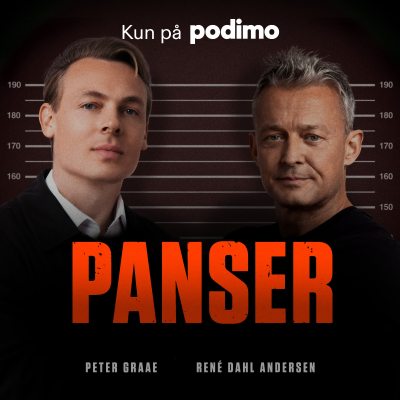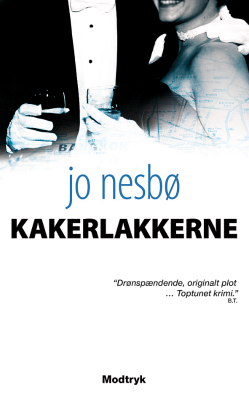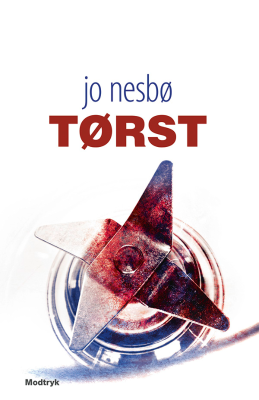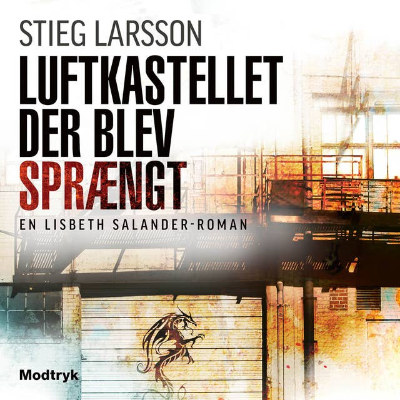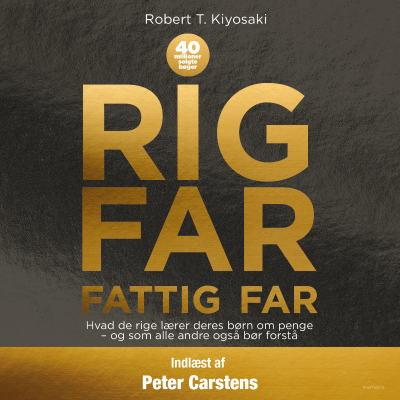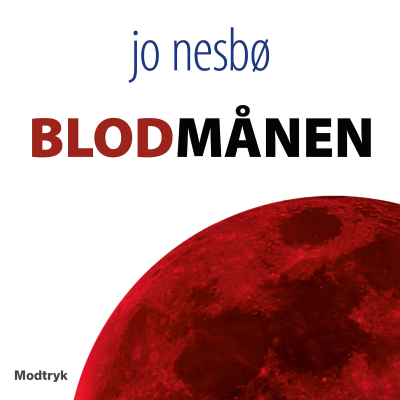
Canada Foundation for Innovation
engelsk
Videnskab & teknologi
Begrænset tilbud
3 måneder kun 9 kr.
Derefter 99 kr. / månedOpsig når som helst.
- 20 lydbogstimer pr. måned
- Podcasts kun på Podimo
- Gratis podcasts
Læs mere Canada Foundation for Innovation
Since 1997, the Canada Foundation for Innovation has invested in infrastructure that researchers need to think big, innovate and push the boundaries of knowledge. State-of-the-art research facilities and equipment increase the capability of Canada’s universities, colleges, research hospitals and non-profit research organizations to carry out high-quality research. This, in turn, helps them to attract and retain the world’s top talent, train the next generation of researchers and support world-class research that strengthens the economy and improves the quality of life for all Canadians. Website: https://www.innovation.ca
Alle episoder
80 episoder10,000 ways | Jan Rainey is untangling the mysteries of spider silks
The Dalhousie University researcher is looking to create synthetic versions of spider's silk that have the potential to help heal damaged nerves and damaged hearts. Researcher Jan Rainey’s curiosity about synthetic fibres began during an undergraduate work term with DuPont. Years later, he heard stories from a fellow researcher that alluded to the amazing properties of spider’s silk. Now he's studying the unique characteristics of spider fibres in hopes of generating synthetic versions that are stronger than bullet-proof Kevlar and body restorative. Drop in, stick around and get trapped in a great science story from a cutting-edge bio-lab. Want to know more? * Jan Rainey’s biography [https://medicine.dal.ca/departments/department-sites/biochemistry-molecular-biology/our-people/faculty/rainey.html] from Dalhousie University * Learn about the fascinating history of Lycra [https://www.lycra.com/en/lycra-about-lycra-fiber/see-how-lycra-fiber-has-shaped-world] * Explore the history [https://www.textilesphere.com/2024/09/spider-silk-history-properties-and-applications.html] of a most extraordinary textile fibre, spider silk * Cicada recording courtesy of Songofinsects.com [http://songsofinsects.com/]
10,000 ways | Pooneh Maghoul: Working at the forefront of geotechnical engineering
(Available only in French) Can our critical infrastructure withstand the effects of climate change? Pooneh Maghoul and her research team are working to make our bridges, roads and other critical infrastructures more resistant to climate change and extreme environments on Earth and in space. She founded the Sustainable Infrastructure and Geoengineering Lab at Polytechnique Montréal. In this podcast, she explains the complexities of permafrost engineering and shares the most important lesson life has taught her. Some of the additional content for this podcast is only available in French. Read Pooneh Maghoul's biography [https://www.polymtl.ca/expertises/en/maghoul-pooneh] on the Polytechnique Montréal website; Read the La Presse article: Du permélisol... jusqu'à la Lune! [https://www.lapresse.ca/affaires/portfolio/2023-01-25/genie/du-pergelisol-jusqu-a-la-lune.php] Read the blog post from the school of engineering at Polytechnique Montréal: An earthworm robot ... for the Moon! [https://www.polymtl.ca/carrefour-actualite/en/blogue/earthworm-robot-moon]; Awards and honours: Winner of the prestigious ISSMGE (International Society for Soil Mechanics and Geotechnical Engineering) award [https://www.polymtl.ca/carrefour-actualite/nouvelles/la-professeure-pooneh-maghoul-de-polytechnique-montreal-laureate-dun-prestigieux-prix-de-lissmge]; Recognized by the Canadian Geotechnical Society [https://www.polymtl.ca/carrefour-actualite/en/news/professor-pooneh-maghoul-recognized-canadian-geotechnical-society]
10,000 ways | Researchers from the University of Saskatchewan are global leaders in pandemic preparedness
In 2002, German researcher Volker Gerdts relocated to Saskatoon. Cutting-edge vaccine research was the attraction. Now he is at the helm of the Vaccine and Infectious Disease Organization (VIDO) World-renowned infectious disease specialist Volker Gerdts calls himself a “builder” who is carefully assembling a passionate team working to stop disease outbreaks in their tracks. His passion is infectious as he strives to keep people in Canada safe from future pandemics. The Vaccine and Infectious Disease Organization (VIDO), working out of the University of Saskatchewan, is at the frontline of Canada’s pandemic preparedness initiatives. Want to know more? * Learn more about VIDO [https://www.vido.org/] and how it’s helping to build a healthier world * Click here [https://www.canada.ca/en/public-health/services/publications/healthy-living/canadian-immunization-guide-part-1-key-immunization-information/page-14-basic-immunology-vaccinology.html] if you’re interested in knowing more about immunology and vaccinology * Find out how VIDO [https://ised-isde.canada.ca/site/biomanufacturing/en/biomanufacturing-series-vaccine-and-infectious-disease-organization-vido] is working to identify future diseases in order to control and contain initial outbreaks * Visit VIDO’s profile on the Research Facilities Navigator [https://navigator.innovation.ca/en/facility/university-saskatchewan/vaccine-and-infectious-disease-organization-vido] to learn more about research and business opportunities
10,000 ways | How neuroendocrinology crosses sectors to create promising new insights
(This podcast is only available in French) Nafissa Ismail focuses on the effects of hormones on the brain to pin down the interactions between our organs and our emotions Epidemiological data shows that the roots of depression form during puberty or adolescence for 75 percent of adults experiencing it. Nafissa Ismail is a professor at the University of Ottawa's School of Psychology and a leading figure in mental health research. Her work is making a significant contribution toward understanding the causes of mental disorders and how to treat them. Want to know more? * Visit the websites of the NISE Laboratory [https://collabzium.com/en/nise-laboratory-neuroimmunology-stress-and-endocrinology] (neuroimmunology, stress and endocrinology) and the LIFE Research Institute [https://www.uottawa.ca/research-innovation/life]. Nafissa Ismail is director of both. * Nafissa Ismail received the Governor General's Award for her research on women's health [https://www.canada.ca/en/women-gender-equality/commemorations-celebrations/governor-general-awards/2023-recipients.html]. * Get mental health support [https://www.canada.ca/en/public-health/services/mental-health-services/mental-health-get-help.html]: this Government of Canada site tells you how to find help.
10,000 ways | The future of flight depends on sustainability that goes beyond biofuels
The University of Waterloo’s Suzanne Kearns is a global leader in sustainable aviation, but her flight path wasn’t without turbulence. Suzanne Kearns grew up in Wiarton, Ont., where she would lie in the grass and watch airplanes from the local airport take flight overhead. Her dreams of flying led to a fixed-wing licence at 16 and helicopter licence a year later. At 24, she was a full-time university lecturer on aviation. Today, as the founder of the Waterloo Institute for Sustainable Aeronautics, she is helping curb the environmental impacts of flight and inspiring the next generation of aviation professionals in the process. Want to know more? * Suzanne Kearns biography [https://uwaterloo.ca/sustainable-aeronautics/profiles/suzanne-kearns] from the University of Waterloo. * More about the history, mission and vision [https://uwaterloo.ca/sustainable-aeronautics/about-wisa] of the Waterloo Institute of Sustainable Aeronautics (WISA), its research studies [https://uwaterloo.ca/sustainable-aeronautics/research-and-partnerships/research-studies]and its flight simulator lab. [https://uwaterloo.ca/sustainable-aeronautics/about-wisa/wisa-sim-lab] * Pipistrel Aircraft [https://www.pipistrel-aircraft.com/], a light aircraft manufacturer aiming to provide sustainable and environmentally-friendly solutions to the aircraft industry. * Read about University of Waterloo alum Jeremy Wang and his company Ribbit, an innovator in pilotless planes. [https://www.flyribbit.com/]
Vælg dit abonnement
Begrænset tilbud
Premium
20 timers lydbøger
Podcasts kun på Podimo
Gratis podcasts
Opsig når som helst
3 måneder kun 9 kr.
Derefter 99 kr. / måned
Premium Plus
100 timers lydbøger
Podcasts kun på Podimo
Gratis podcasts
Opsig når som helst
Prøv gratis i 7 dage
Derefter 129 kr. / måned
3 måneder kun 9 kr. Derefter 99 kr. / måned. Opsig når som helst.



